Emoskop
Das Emoskop ist ein Multifunktionsgerät, welches im Miniaturformat bei hoher optischer Qualität als Monokular (2,5x Ferne), Fernrohrlupe (3x Nähe ca. 18 cm), Lupe (5x, 10x, 15x) oder Mikroskop (25x, 30x) genutzt werden kann. Es wurde von Arthur Seibert (1906-1980), Gründer der EMO-OPTIK in 1951, konstruiert. A. Seibert arbeitete auch für Leitz und Minox. Das ca. 32mm lange und 28g schwere Emoskop besteht aus zwei ineinanderschiebbaren Tubusteilen und einer Vorsatzlinse sowie oftmals einem kleinen Plexiglasständer und einer Lederaufbewahrungstasche. |
The "Emoskop" is a multifunctional optical device: it is a miniaturized high quality monocular (2.5x), a telscopic loupe (3x, focus 18cm), a loupe (5x, 10x or 15x), and a microscope (25x or 30x). It was developped by Arthur Seibert (1906-1980), founder of EMO-Optik in 1951. A. Seibert was also employed at Leitz and Minox. The approx. 32mm long and 28g Emoskop works with two sliding tubes that can be put apart, a close-up lens, and often a small acryl stand. A leather case comes with it. |

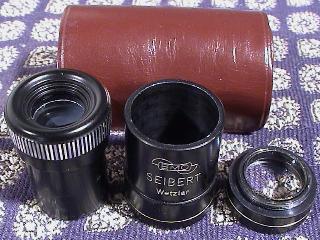
Das Original Emoskop (s. Fotos oben) hat metallene Tuben sowie ein geriffeltes Okular und je einen eingelegten silberfarbene Zierring am Objektivtubus und an der Vorsatzlinse. Es gab anfänglich keinen Plexiglasständer dazu. Selten, aber zu einer Zeit erhältlich war eine kleine Strichplatte zum Ablesen der Objektgröße (vgl. Emoskop B unten). |
The original Emsokop (s. photo above) is made of metal tubes with a milled ocular end and a decorative silver band at the objective end at the close-up lens each. Originally there was no acryl stand. At some there was also a reticle plate available (cf. Emsokop B). |

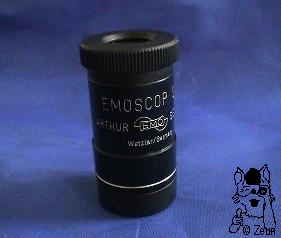
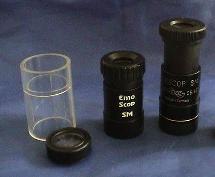
Die von mir erworbenen Emoskope sind:
|
These are the Emoskops of my collection:
|
D 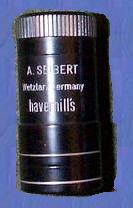 E
E
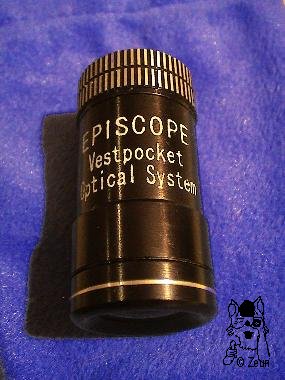 F
F 
Die drei optischen Linsenteile sowie der Ständer können auf verschiedene Weise kombiniert werden, um unterschiedliche Vergrößerungen und somit Funktionen zu erreichen. |
There are different combinations of the three optical lens parts and the stand to get different magnifications and usages. |
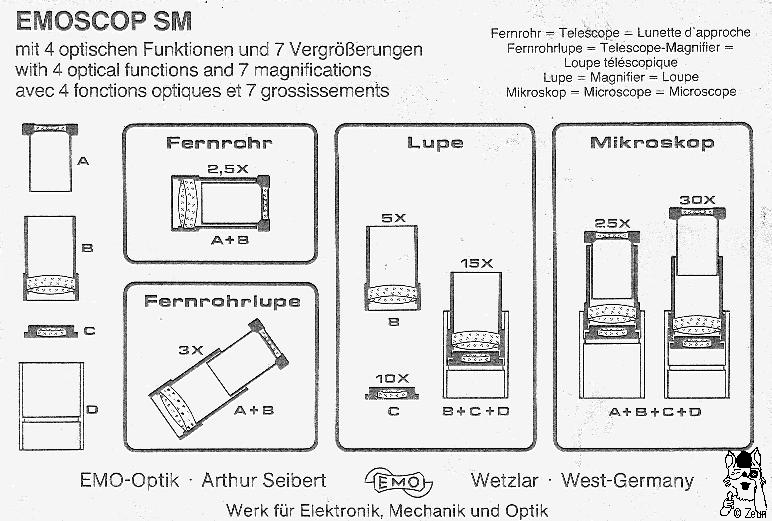
Fotos: Zeun; Quellen: Ebay-Auktion / Emoskopseiten (s. Links)


